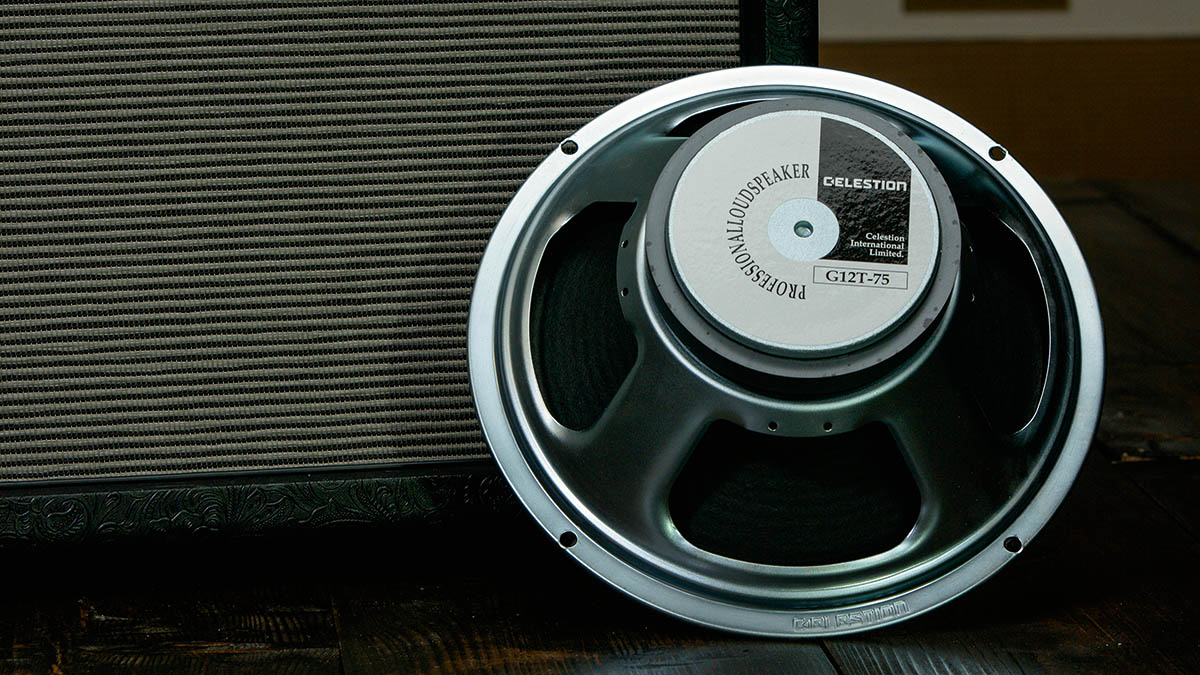
As with many things these days, head to YouTube and you’ll find a reactionary video about almost any topic – and this is especially true when it comes to guitar speakers.
You’ll hear stories about how a certain speaker from 1997 sounds best if it was made before lunch on a Tuesday, or that another speaker is the worst thing ever but only if it has the blue sticker, otherwise it’s amazing.
A lot of this is generally just to get clicks, and even if there is a bit of truth somewhere, it tends to get lost beneath a million and one assumptions. To me, rarely has this been more true than for Celestion’s G12T-75.
The T75 was released in the early ’80s and soon became the go-to speaker for Marshall amps. Not too long before and up until the late ’70s, the Greenbacks (or more accurately Blackbacks at the time) were Marshall’s favoured speakers, but the lower power ratings of the Greenbacks of between 25 and 30 watts was seen as too low. Therefore, and after a few alternatives, the 75-watt G12T-75 was settled upon.
The T75 was quite well received at the start and it’s easy to see why: it has a certain aggression and plenty of cut that can be useful for a lot of ’80s guitar tones. However, somewhere between then and now, it seems to have become one of the more divisive speakers out there.
I spend a lot of time recording speakers, playing dozens of them each week, as well as listening to multiple speaker recordings and combinations in a studio setting. But over the years I really didn’t come across the T75 that much.
Maybe guitarists looking for a custom cab moved away from the most common guitar speaker out there, which makes sense, but I just didn’t hear it too often.
That said, when I heard murmurs of disappointment over the T75’s sound, it did prick my ears. At first, these video appraisals seemed to focus around heavier playing styles, but I have to say, for the few T75s that we use at Zilla, the majority were for heavier players, often mixed with a V30.
Horses for courses
At this point, I decided to have a closer look at how the T75 varied through the ages. I’m sure you can imagine, the most-used speaker is also probably one of the most-replaced speakers, too, and therefore, due to the T75 being so common, it’s quite cheap and easy to get hold of some good examples of it throughout the years.
In general, well-looked-after speakers will sound softer and warmer with age (although at the same time, speakers from 4x12s tend to sound worse than from combos), so after finding multiple examples of T75s from the mid-’80s up to the present day, I found the differences weren’t actually night and day.
The older models did sound that bit softer, but for heavier recordings there were certain qualities from the straight-out-of-the-box models that sounded better.
Not only do we have different ears, each colouring what we hear, but we have different opinions on what sounds good
In fact, the aggression in the sound could actually be useful in some styles. After recording each of our T75s with multiple different amps and tracks, we found it sounded pretty cool for some bluesy ‘edge of break-up’ stuff, especially in smaller combos.
This demonstrates not only do we have different ears, each colouring what we hear, but we have different opinions on what sounds good. I managed to find the T75 useful for many different styles, and really quite good for a few.
Sure, it can be a bit aggressive and there are plenty of speakers I’d recommend before it for many scenarios, but unless we have played every speaker, in every style and in a sufficient number of cabinets, then we might not have the authority to place a label on it. Instead, maybe just stick to saying, “I prefer something else.”







